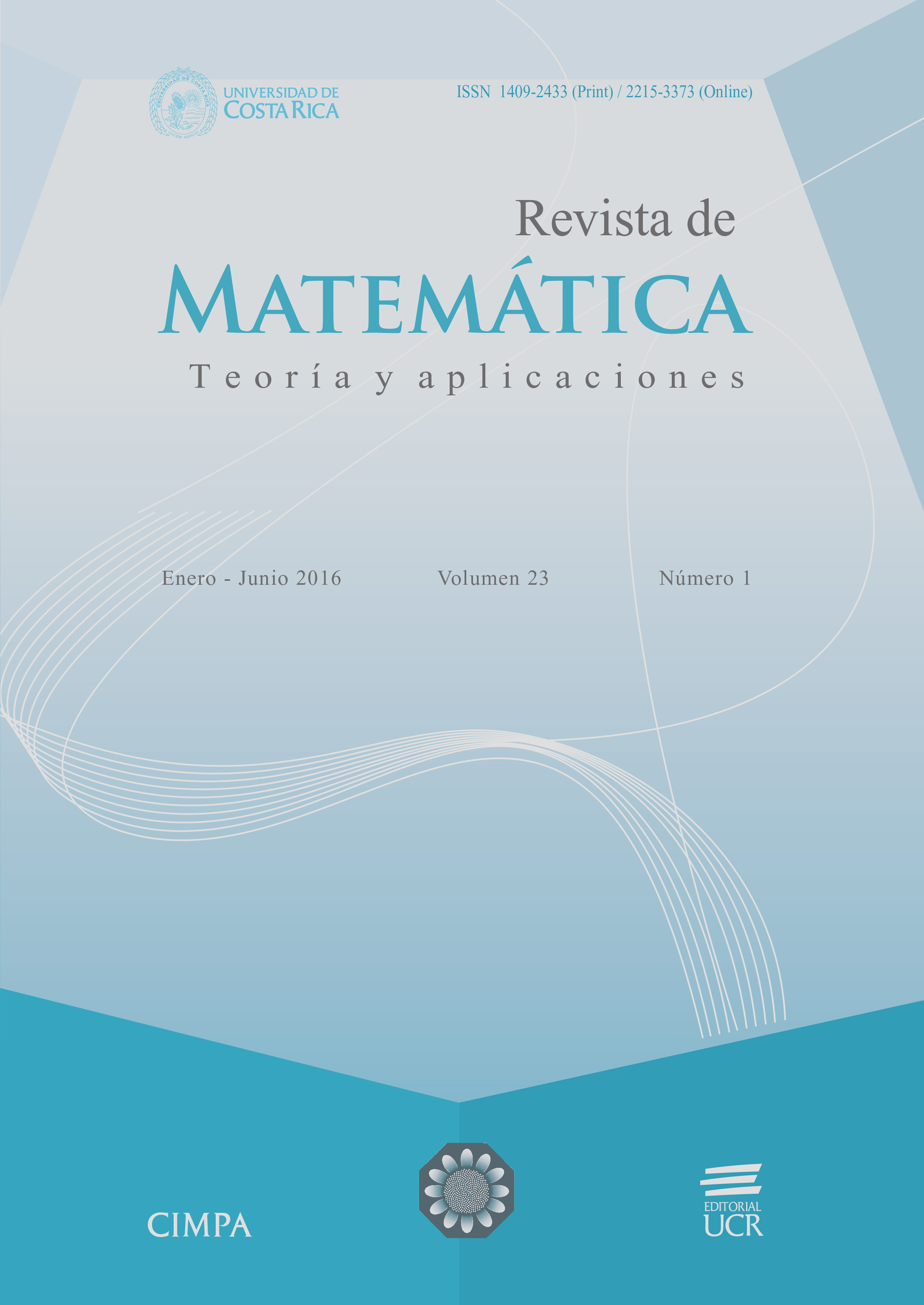Abstract
This approach follows the following scheme: first, the vector score and the information matrix from the logistics models and saturated multinomials with three possible response levels starting from the first and second derivative of the function of likelihood with respect to the parameters of the models; the relationship between the vector score and the information matrix; the multivariant standardization of the entry variables of each model; the respective asymptotic distributions; proof of comparisons and model selections that include the polytomic variable with three levels, logistic logistical and saturated models, logistical and submodel, logistical with null model, and logistical with the submodel of a less explanatory variable.
References
Agresti, A. (1990) Categorical Data Analysis. John Wiley and Sons, New York.
Hosmer, D.; Lemeshow, S. (2000) Applied Logistic Regresssion, Segunda edición. John Wiley & Sons, New York.
Jiménez, J. (2004) Notas de clase Algebra lineal II (con aplicaciones en estadística). Unibiblos, Universidad Nacional de Colombia.
Kleinbaum, D.; Klein, M. (2002) Logistic Regression: A self Learning Text, Segunda edición. Springer, Nueva York.
Llinás, H. (1998) Modelos Logísticos: Estimaciones, Pruebas de Hipótesis y Selección de Modelos. Tesis de Maestría, Universidad del Valle, Cali, Colombia.
Llinás H. (2006) “Precisiones en la teoría de modelos logísticos", Revista Colombiana de Estadística 29(2): 293–265.
Llinás, H.; Carreño, C. (2012) “El modelo logístico multinomial para el caso en que la variable de respuesta puede asumir uno de tres niveles y modelos relacionados", Revista Colombiana de Estadística 35(1): 131–138.
Richard, A.; Dean, W. (2002) Applied Multivariate Statistical Analysis, Fifth Edition. John Wiley & Sons, New York.
Tilano, J. (2012) Modelos Saturados: Estimaciones, Pruebas de Hipótesis y Selección de Modelos. Tesis de Maestría. Universidad del Norte, Barranquilla, Colombia.





